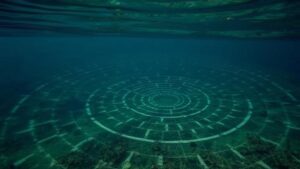The use of bioarchaeology in reconstructing life in ancient tunnel-based communities.
The Use of Bioarchaeology in Reconstructing Life in Ancient Tunnel-Based Communities
Bioarchaeology, the study of human remains in an archaeological context, plays a crucial role in uncovering the lifestyles and health of ancient populations. This interdisciplinary field often employs methods from biology and anthropology to interpret not only the physical remains but also the cultural practices of societies. Among the most intriguing subjects of bioarchaeological study are ancient tunnel-based communities, which provide a unique glimpse into the lives of those who relied on subterranean spaces for shelter, protection, and survival. This article explores the methodologies and findings of bioarchaeological research in these settings, focusing on key tunnel-based communities and what they reveal about human adaptability and social organization.
Understanding Tunnel-Based Communities
Tunnel-based communities are often characterized by their extensive underground networks, which served various purposes–including habitation, storage, and defense. These communities have been identified in several regions around the world, including:
- Cappadocia, Turkey: Dated back to the Hittite period (circa 1600-1180 BCE), the region features extensive underground cities that could shelter thousands.
- Montreal, Canada: The RESO, or La Ville Souterraine, showcases 33 kilometers of tunnels serving commercial, cultural, and transit needs, though modern.
- Scotlands Skara Brae: This Neolithic site (circa 3100-2500 BCE) includes structures with earthen roofs, indicating a subterranean lifestyle.
Bioarchaeological Methodologies
Bioarchaeologists utilize several techniques to gather data from excavated remains and associated artifacts. This analysis often includes:
- Osteological Analysis: The examination of bones to assess age, sex, health, and nutrition, allowing for insights into physical conditions and mortality rates.
- Stable Isotope Analysis: This technique helps determine dietary patterns by analyzing isotopes of carbon and nitrogen in bone collagen, offering clues about ancient diets.
- Paleoepidemiology: Studying the prevalence and patterns of disease in ancient populations through skeletal evidence, revealing how health issues influenced community structure.
Case Studies of Tunnel-Based Communities
Cappadocia
The underground cities in Cappadocia are a prime example of bioarchaeological research. Excavations have revealed numerous bodies within these subterranean networks, providing vital data about the inhabitants health conditions. For example, researchers discovered high levels of skeletal trauma, indicating frequent conflicts, likely linked to invasions during the Byzantine period. These findings are corroborated by historical texts, which mention the regions strategic significance during wars.
Montreal’s Underground City
While more contemporary, the study of Montreals RESO highlights bioarchaeology’s relevance in understanding modern health practices and urban living spaces. Researchers have linked aspects of architectural design to the social dynamics of populations, noting how the underground setting provided climate-controlled spaces which affected inhabitants overall well-being and health. This community study foreshadows future bioarchaeological implications on urban living.
Skara Brae
At Skara Brae, bioarchaeological findings have involved examining human remains alongside artifacts. Analysis revealed a diet predominantly consisting of marine resources, supplemented by agriculture. Such dietary practices illustrate adaptability to the challenging climates of Orkney. Researchers noted connections between social structures and the available resources, shedding light on the communal cooperation required for survival in harsh conditions.
Implications of Findings
The implications of bioarchaeological findings in tunnel-based communities extend beyond merely reconstructing daily life; they also illuminate broader themes such as:
- Human Adaptability: The ability of communities to adapt to environmental challenges by utilizing subterranean spaces illustrates resilience.
- Social Structure: Analysis of burial practices and artifacts can reveal the hierarchy and organizational structures within these communities.
- Cultural Interactions: Bioarchaeology often reveals interactions between different groups through trade, conflict, or shared resources, demonstrating the interconnectedness of ancient civilizations.
Conclusion and Actionable Takeaways
Bioarchaeology offers invaluable insights into the lives of ancient tunnel-based communities, helping us understand their health, culture, and social structures. By studying human remains and the contexts in which they were found, researchers can draw conclusions about how these populations thrived in challenging environments. For those interested in pursuing further exploration in this field, consider:
- Engaging with local archaeological societies or universities to attend lectures or participate in digs.
- Exploring museum exhibits that focus on bioarchaeology and ancient communities.
- Diving into academic journals for the latest research findings.
By embracing bioarchaeology as a means of understanding our past, we not only reconstruct ancient lives but also gain insights that inform contemporary discussions on community resilience and human health.



